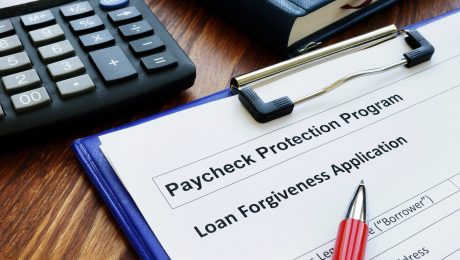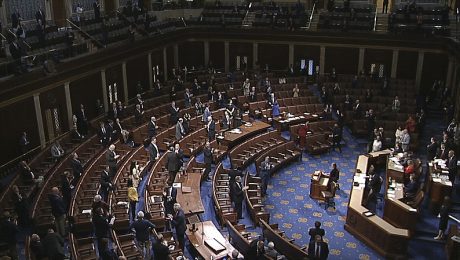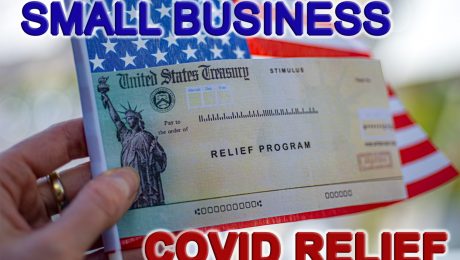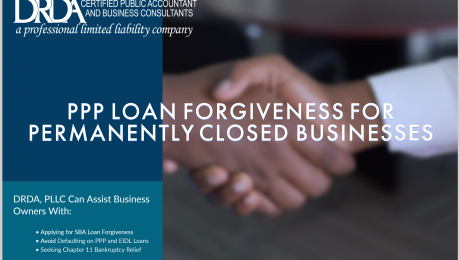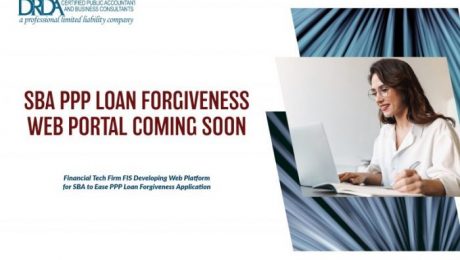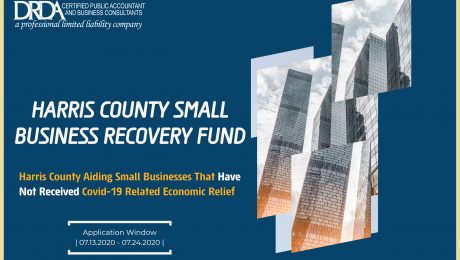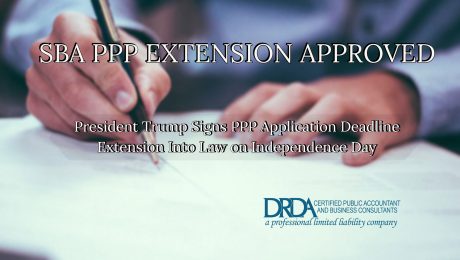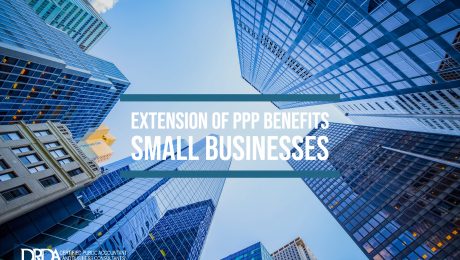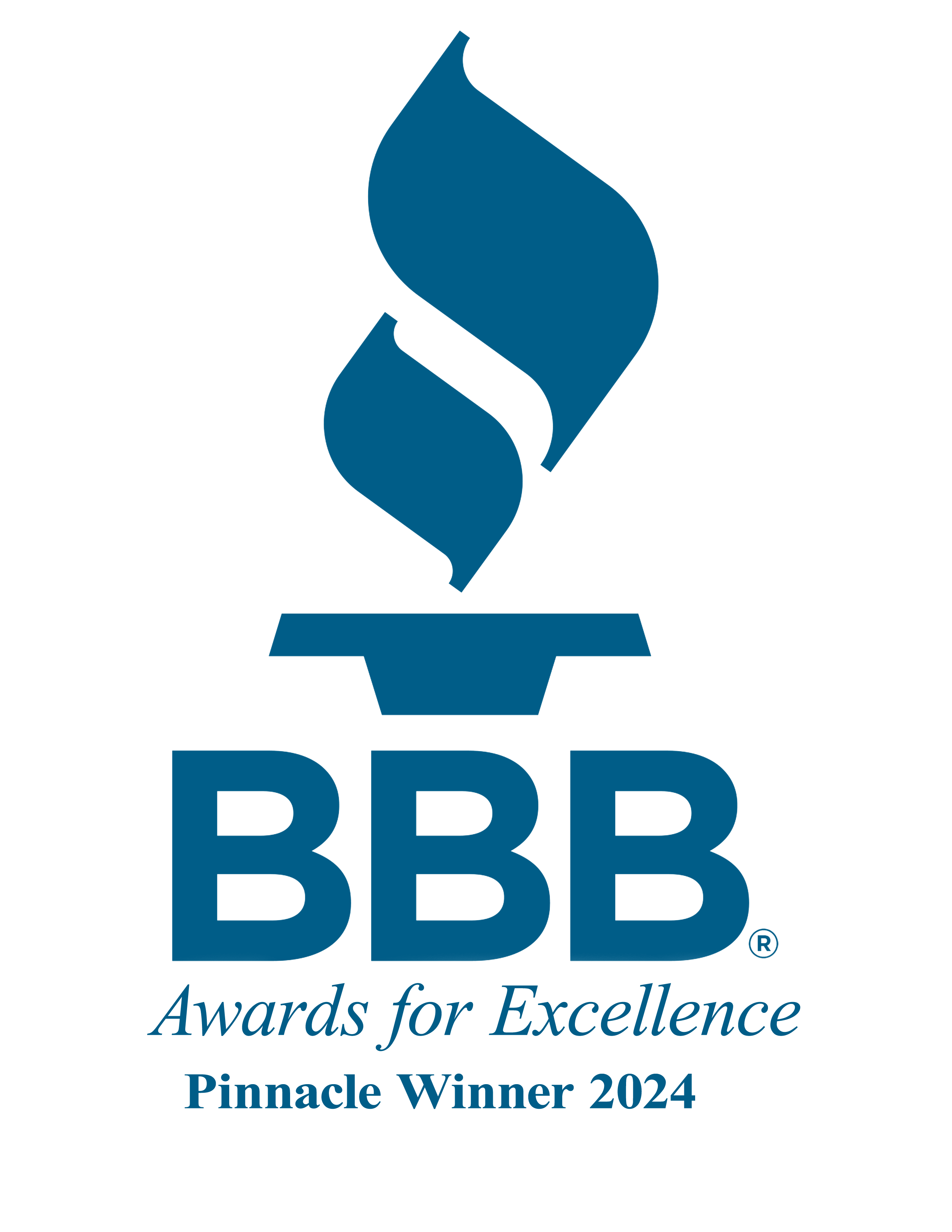The second stimulus package has been signed by President Trump
President Donald Trump signed on Sunday evening a $900 billion pandemic relief bill into law that includes enhanced unemployment benefits and direct cash payments. The measure is the second-largest federal stimulus package after the $2 trillion CARES Act that Congress approved in March.
Lawmakers passed the bill last Monday, just in time to get something done before the end of December, when several aid programs in the CARES Act were set to expire, including key pandemic jobless assistance measures and eviction protections.
Here’s some of the major points:
Stimulus checks
The package sends direct stimulus payments of $600 to individuals, half the amount provided in the first round of checks, which went out in the spring. Eligible families will receive an additional $600 per child — which is $100 more than Congress gave families in the first round of relief last spring. Eligible children are 16 and under on the 2019 Tax Return. If a child was born in 2020, they are not eligible since they are not documented in the 2019 Tax Return.
The payments start phasing out for individuals with adjusted gross incomes of more than $75,000, and those making more than $99,000 will not receive anything. The income thresholds are doubled for couples. The amounts will be based on 2019 incomes. Those who filed their 2019 tax returns will receive their money automatically, as well as Social Security recipients and those who uploaded their bank account information using the IRS’s online portal to receive their first payments.
Undocumented immigrants who do not have Social Security numbers remain ineligible for the payments. But in a change from the first round, their spouses and children are now eligible as long as they have Social Security numbers.
Unemployment benefits
Eligible Unemployed will receive a $300 weekly federal enhancement in benefits through March 14. The amount is half of the earlier federal boost, which ran out at the end of July. Also, the package extends by 11 weeks two other pandemic unemployment programs that were created in the CARES Act in March and were set to expire at year’s end.
- The Pandemic Unemployment Assistance program: initially expanded jobless benefits to gig workers, freelancers, independent contractors, the self-employed and certain people affected by the coronavirus for up to 39 weeks.
- The Pandemic Emergency Unemployment Compensation program: provided an additional 13 weeks of payments to those who exhaust their regular state benefits.
Both programs will now close to new applicants on March 14th but continue through April 5th for existing claimants who have not yet reached the maximum number of weeks.
Also, the measure provides a federally funded $100 per week additional benefit to those who have at least $5,000 in annual self-employment income but are disqualified from receiving Pandemic Unemployment Assistance because they are eligible for regular state unemployment benefits; In addition, the package gives states the authority to waive overpayments in cases where the claimant is not at fault.
The package also continues full federal financing of extended benefits through mid-March, providing up to 20 additional weeks of payments depending on a state’s unemployment rate. Typically, states and the federal government split the tab. Fewer than two dozen states now offer extended benefits because of the improving economy.
Payment Protection Program & Small business loans
The package reopens the Paycheck Protection Program so that some of the hardest-hit small businesses can apply for a second loan. The program stopped taking applications for the first round of loans in August.
The second loans will be limited to those with fewer than 300 employees that have seen drops of at least 25% of their revenue during the first, second or third quarter of 2020. It also reduces the amount a borrower can receive from $10 million to $2 million, gives businesses more flexibility on how they spend the money and simplifies the forgiveness process for loans under $150,000. It carves out $12 billion for minority-owned businesses. It also expands eligibility to more nonprofits as well as local newspapers, TV and radio broadcasters.
Grants for theaters and other live venues
The package creates a $15 billion grant program for live venues, theaters and museum operators that have lost at least 25% of their revenues. The initial grant can total up to $10 million per eligible business. A second grant, worth half the amount of the first, may also be available. The money will be for specified expenses such as payroll costs, rent, utilities and personal protective equipment.
During the first 14 days of the program’s implementation, grants will be awarded to those who have faced 90% revenue losses. Then, those who have experienced at least 70% revenue losses will be eligible during the next two weeks. After the first month of the program, any other eligible businesses can receive grants.
Funding for schools and child care
It provides $82 billion in aid for K-12 schools and colleges. An additional $10 billion is included to support child care providers that have struggled because of the pandemic.
Rental assistance
It extends until January 31 the eviction protection set to expire at the end of the year. It also provides $25 billion in rental assistance for individuals who lost their sources of income during the pandemic.
Federal nutrition assistance
The package raises SNAP benefits by 15% for six months but does not expand eligibility. This is more generous than the original bipartisan agreement from earlier in December, which called for a four-month increase.
It also expands the Pandemic-EBT program to families with children under age 6 who receive food stamps, deeming them “enrolled” in child care and eligible for benefits. The program now provides money to low-income families with school-age children in lieu of the free and reduced-price meals they would have received in school.
The package sends $400 million to food banks and food pantries through The Emergency Food Assistance Program.It also provides $175 million for nutrition services for seniors, such as Meals on Wheels, and $13 million for the Commodity Supplemental Food Program, which serves more than 700,000 older Americans monthly.
Vaccine and hospital funding
It provides $20 billion for the purchase of vaccines so they can be available at no charge for those who need it, as well as another $8 billion for vaccine distribution. It also gives states $20 billion to assist with testing. And it adds $3 billion to the $175 billion fund for hospitals and health care providers for reimbursement of health care-related expenses or lost revenue resulting from the pandemic. The original agreement would have given them another $35 billion.
Payroll tax repayment Employers who are deferring their workers’ payroll taxes under President Trump’s executive action from August now have until the end of 2021 to increase their employees’ withholding to pay back the taxes owed. Originally, the deferred amount
- Published in Uncategorized
Simplified PPP Forgiveness Application
Revisions to Loan Forgiveness and Loan Review Procedures were issued on Thursday, October 8. In these revisions made by the Small Business Administration (SBA) and the Treasury Department, recipients of Paycheck Protection Program (PPP) loans of $50,000 or less will be able to apply for forgiveness using a simplified application. The new application, Form 3508S, is one and a half pages long and requires the borrower to verify that the amount that is being requested for forgiveness is in accordance with PPP requirements. Documentation consists of payroll and non-payroll costs such as mortgage interest payments, rent, or utility costs.
Looking at the instructions to Form 3508S, it is clear that for borrowers who fall into this category of having PPP loans of $50,000 or less will not receive automatic forgiveness. The good news is that the standard application for forgiveness (Form 3508) is long, confusing, and time-consuming, however, the new form completely removes this. This simplified application incorporates a new interim final rule (IFR) providing new guidance concerning forgiveness and loan review processes. Specifically, a borrowers of a PPP loan of $50,000 or less is no longer required to reduce the amount eligible for forgiveness if the borrower:
- Reduces the salary or hourly wage of an employee (who earned less than $100,000 in 2019) during the “covered period” following the borrowing relative to the first quarter of 2020, or
- Reduces full-time equivalent employees (FTEs) during the covered period relative to a base period.
Meaning, that borrowers are exempt from the PPP requirement that FTE employee numbers pre-pandemic must remain the same during the covered period as well as not reducing employee wages. The CARES Act (Section 1106) gave the authority to the SBA Administrator as well as the Treasury Department to create such exemption.
Aside from those very important exemptions, the application process is largely the same. Borrowers must still compute the amount that they are eligible for forgiveness, but now borrowers do not have to show their math. However, that math should stay readily available in case the SBA requests it at any time.
The SBA is currently processing these forgiveness claims. Borrowers that seek forgiveness must submit a form and accompanying documents within 10 months from the end of their covered period. The lender will then have 60 days to determine whether the loan was forgiven.
There have been 5.2 million approved PPP loans, 3.57 million of which were for $50,000 or less. These loans accounted for $62 billion of the allotted $525 billion in PPP loans. This new forgiveness application can help millions of borrowers.
For those who are not eligible to use the Form 3508S and, instead, have to use Form 3508, a set of step-by-step instructions which is linked here.
For use of any of the forms mentioned here, please see below:
Submitted by: Kendra May
- Published in Uncategorized
Compromise Coronavirus Package
After meeting every day for more than a week, Nancy Pelosi (House Speaker, D-California), Chuck Schumer (Senate Minority Leader, D-New York), Steven Mnuchin (Treasury Secretary), and Mark Meadows (White House Chief of Staff) are trying to find a compromise between the
Democrats’ $3 trillion proposal and the Republicans’ $1 trillion package. While negotiations are still going on, the framework for the next stimulus package called the March to Common Ground has been released. The March to Common Ground includes proposals and key compromises from both parties. The Proposals are being led by Representative Josh Gottheimer (D-New Jersey) and Representative Tom Reed (R-New York) and are being supported by 50 lawmakers—25 Democrats and 25 Republicans.
THE MARCH TO COMMON GROUND
The United States Treasury has already claimed they would accept a $1.5 trillion deal, however the Democrats may have to make more compromises for the deal to go through. As of right now, all eyes are on the Democrats to see if there will be a successful compromise. The framework for the March to Common Ground includes:
- $1,200 second stimulus checks and $500 per child and dependent adults
- $450-$600 weekly unemployment benefits
- $500 billion to state and local governments
- $290 billion for Paycheck Protection Program and other small business programs
- $100 billion for virus testing and tracing and public health
- $25 billion for mortgage and rental assistance
- $145 billion for schools and child care
- $25 billion for broadband, agriculture, Postal Service and Census
- $11 billion for WIC and SNAP assistance
- $400 million for 2020 elections
- Student loan forbearance through December 31, 2020
- Worker and Liability Protections
PAYCHECK PROTECTION PROGRAM
The Paycheck Protection Program (PPP) was created to help small businesses during the COVID-19 pandemic. It is a loan program designed to provide a direct incentive for small businesses to keep their workers on the payroll to reduce unemployment. Most small businesses who took out a PPP loan earlier in the year have exhausted the resources, and for many, the company and their employees are hanging in the balance.
A major component of the March to Common Ground relief framework includes $290 billion for the PPP and other small business programs. $240 billion of this fund is allotted for the PPP which will allow small businesses to take out a second PPP loan and will allow for a simplified forgiveness process. In addition, $50 billion has been allotted for the Targeted Employee
Retention Tax Credit (ERTC).
ANOTHER DELAY TO THE BILL
On Tuesday, September 22, House of Representative leaders abruptly delayed plans for a floor vote on a stopgap funding measure that is needed to avoid a partial government shutdown. Even with the stopgap funding measure passed in the House, it still needs to be approved by the Senate and President Trump to ensure the government does not have a shutdown in eight days. Continual hiccups of this nature will slow down congressional leaders and their approval of the March to Common Ground as well as other bills.
Submitted by:
Kendra May
- Published in Uncategorized
Small Business COVID Relief Framework
According to the Small Business Administration (SBA), there was $518 billion in funding for the 4.9 million Paycheck Protection Program (PPP) loans that were approved. However, Goldman Sachs reported that 84% of small businesses that received a PPP loan will have exhausted the funding by the beginning of August. With October right around the corner, most small businesses have indeed exhausted all their funds and many businesses are fighting to stay afloat amid the COVID-19 pandemic. Furthermore, businesses located in distressed areas and operated by people of color did not have the ability to obtain anything from the first round of PPP loans.
THE SOLUTION
To mitigate businesses from falling under, $240 billion for a second-round of PPP loans could help sustain businesses. This PPP loan would include flexible use, full transparency, simplified forgiveness, and prioritize distressed businesses. Borrowers would have an easier application as there will be significantly less paperwork to fill out for loans under $150,000 but would still have to maintain the record as SBA reserves the right to “review and audit these loans to ensure against fraud.” The flexible use could include allowing businesses to use the loan for face masks, plexiglass shields, improving HVAC system, and/or adding furniture that encourages social distancing.
With $145 billion remaining from PPP to be re-appropriated, $95 billion of the money can be distributed into a variety of things, including $11 billion for Community Development Financial Institutions Funds (CDFIs), $17 billion for small/community banks, $17 billion for mid-sized banks, and $50 billion for Economic Injury Disaster Loans (EIDLs). The CDFI program offers both financial assistance and technical assistance to CDFIs. This assistance allows the CDFI organizations to meet the needs of the communities they serve by financing businesses and providing affordable housing units. Small and mid-sized banks would benefit from the relief by not collapsing after loaning money to businesses that have gone bankrupt due to the pandemic. The EIDL program is designed to provide economic relief to businesses affected by COVID-19. This covers working capital and normal operating expenses such as:
- Health care benefits
- Rent
- Utilities
- Fixed debt payments
The other $50 billion can be used for Targeted Employee Retention Tax Credit (ERTC). This is a refundable tax credit against certain employment taxes equal to 50% of the qualified waged an eligible employer pays to employees from March 12,2020 to January 1, 2021. Those eligible can receive immediate credit by reducing employment tax deposits.
The Main Street Lending Program should also be rectified to help businesses in need. This program was established on April 9, 2020 by the Federal Reserve to support small to medium profit businesses and nonprofit organizations that had good financial standing before COVID-19. The Federal Reserve will buy 95% of new or existing loans to qualified employers, while the issuing bank will keep 5% to discourage irresponsible lending. In exchange for the loan, employers must make reasonable efforts to maintain payroll and retain workers.
However, even with these solutions, Congress has yet to pass the second-round PPP loans, and according to the Silicon Valley Business Journal, the chances of a second round of PPP loans or any small business stimulus from Congress is beginning to fade as the election nears.
SUBMITTED BY:
Kendra May
- Published in Uncategorized
PPP LOAN FORGIVENESS FOR BANKRUPT BUSINESSES
Despite the $630 Billion funding provided by the Treasury Department and Small Business Administration (SBA) through the Payroll Protection Program (PPP) to assist small businesses survive during the Covid-19 crisis and subsequently over 170,000 jobs saved, there are almost 140,000 small businesses that still remain closed. Of the closed businesses, approximately 41% will remain that way permanently, according to Yelp’s Economic Impact Report.
LOAN FORGIVENESS
Business owners are now wondering what happens to a small business that received PPP loans if it goes out of business. Loan forgiveness will depend if funds were completely utilized for the purposes of keeping the business open, regardless of amount. The PPP program states that if a PPP beneficiary utilized all funds within the time-frame given them (eight weeks, or twenty-four weeks for those who received an extension thanks to the PPP Flexibility Act), and can demonstrate that 60% of the loan went to payroll, then the PPP loan qualifies to be completely forgiven. However, should the beneficiary not meet the requirements for loan forgiveness, then any amount remaining must be repaid.
Businesses that borrowed PPP and/ or disaster loans of $25,000 or less will generally benefit from more favorable terms from lenders, according to financial experts. In the event of bankruptcy, loans of small amounts can generally be forgiven, provided the borrower acted in good faith (utilized funds as stipulated). However, if small businesses misused its PPP loans and then closed permanently, the SBA and Treasury have made it clear they intend to pursue monies owed.
DON’T DEFAULT
In the unfortunate event the borrower cannot repay the loan and defaults, the consequences will depend on the loan amount borrowed. For example, businesses that borrow PPP and EIDL (Economic Injury and Disaster Loan) funds of $25,000 or less are not required to provide collateral or personal guarantees to the financial institution. As such, lenders usually are not able to seize business or personal assets to cover the loss. This does not mean that the business owner is out of the woods! Keep in mind that PPP and EIDL loans are government loans, thus making the U.S. Government the actual lender. Although personal or business property may not be seized, the federal government can report borrowers who default to all credit bureaus, making it very difficult to obtain future credit. And even if a business (in default) can obtain credit, it will mostly likely come with a high interest rate. Furthermore, the federal government can also seize any income tax refunds or other amounts owed to the borrower.
For business owners that borrowed amounts, specifically EIDL (Economic Injury and Disaster Loan) loans, greater than $25,000 this situation becomes a bit more complex. Should the business close permanently and is not able to repay amounts owed, the SBA can appropriate any assets, including warehouse inventory, receivables, machinery, trucks and other items to cover the borrower’s debts.
In addition, businesses that received EIDL amounts of $200,000 or greater, which requires borrowers to provide personal guarantees before loans are granted, can have even their personal property, including cars, bank accounts, investments and/ or personal tax refunds seized to cover outstanding amounts. “That is a much scarier proposition,” said Paul Becht, CPA, partner at Margolin, Winer & Evens, of personal guarantees required for large EIDL loans.
THE SILVER LINING – CHAPTER 11 BANKRUPTCY TO THE RESCUE
Despite millions of small businesses receiving federal aid to survive the pandemic crisis, many businesses expect to close permanently. “I think this will become one of the biggest issues [for loan recipients],” said Nick Oberheiden, a Dallas-based attorney. “I received the loan, I’m going out of business, now what happens to my loan liability?”
There is, however, a silver lining: rather than defaulting, businesses can seek protection by filing for Chapter 11 Bankruptcy under the Small Business Reorganization Act. Chapter 11 Bankruptcy permits “small businesses a really fast and unbureaucratic reorganization while they’re in bankruptcy protection,” said Mr. Oberheiden. Normally, PPP and EIDL loans can be dismissed in bankruptcy, per Michael Brauneis, managing director of Protiviti, a financial services consulting firm. However, as Sharon King, Executive Director of the Boulder Small Business Development Center points out, “most or all of the loan is likely to be discharged as part of the process (provided) the borrower has acted in good faith.”
The SBA has yet to provide additional instruction pertaining to PPP and EIDL loan forgiveness, particularly for business that closed permanently, or are in bankruptcy protection. Once guidance is provided, borrowers should have a better idea on how their PPP and disaster loans will be handled.
- Published in Uncategorized
SBA TO OFFER NEW PORTAL FOR MAKING PPP LOAN PAYMENTS
With the deadline for applying for a Small Business Administration (SBA)’s Payment Protection Program (PPP) extended, additional businesses are taking advantage of applying for a PPP business loan. Once business have utilized the funds to pay employees and company expenses, borrowers can apply for either loan forgiveness, or if not all the funds were utilized, begin repayment of the remaining portion. To simplify repayment, the Small Business Administration (SBA), in conjunction with the U.S. Treasury Department, plans to release a new online portal to simplify the PPP. FIS (Fidelity National Information Services), a provider of financial technology services to business and communities world-wide, is developing the online. The SBA aims to have the web portal available in August.
Available to all businesses and lenders, the portal will provide an easier method for executing the PPP loan forgiveness procedure from start (application filing) to finish (approval). Financial institutions can set up the FIS Portal quickly, with minimal time consumption. Once setup, lenders can enter data pertaining to borrowers and their corresponding loans, so that pre-filled applications can be provided to borrowers for quick completion and submission. Required documentation proving funds used to cover mortgage payment, utilities, required amount to payroll and other expenses, can be uploaded digitally to the portal as well.
The FIS Portal determines the loan amount that will be forgiven based on the information provided. The results are presented to the lender for review and/ or approval, then to the borrower (and back to lender) for e-signature (electronic signature). Once the application is processed completely, the Portal submits the documents to the SBA for confirmation.
“As a critical infrastructure provider, FIS is focused on making it as easy as possible for small businesses and merchants to complete the loan forgiveness process and help them get back to business as soon as possible,” said Rob Lee, head of Global Core Banking and Channels, FIS. “Our new portal uses advanced automation technology to handle the entire process, reducing the time and complexity for businesses in getting forgiveness of the essential loans that are critical to their business.”
FIS Real-Time Lending previously helped expedite the distribution of SBA PPP Loans through financial institutions to borrowers impacted by the Covid-19 crisis.
- Published in Uncategorized
HARRIS COUNTY OFFERING AID TO SMALL BUSINESSES AFFECTED BY COVID-19
The Harris County Small Business Recovery Fund (SBFR), a $30 million grant program approved on June 30th to aid small businesses that have not received Covid-19 related economic relief, took effect yesterday, Monday, July 13, 2020 at 8am. The SBFR program will run for ten (10) business days. The last day to submit applications will be Friday, July 24, 2020 at 3:30pm.
Funded through Harris County, the SBFR program is designed to help small business owners remain open as Texas continues to fight the coronavirus crisis. Businesses that meet certain criteria will be awarded grants up to $25,000 to assist covering expenses including Payroll, rent, accounts payable, utilities and other operating costs.
“The impact of this crisis on small businesses has been devastating. We can’t afford to lose a source of jobs, innovation and the enterprising spirit our region is known for,” Harris County Judge Lina Hidalgo said. “These grants will help business owners stay afloat as Harris County continues to fight the COVID-19 crisis.”
Eligible businesses that qualify for the Harris County SBRF grants include (but are not limited to):
- Sole Proprietorship
- Partnerships
- Self-Employed Individuals
- Non-Profits
- Independent Contractors
Organizations including gambling, residential builders, speculative real estate investors and sexually oriented businesses are not eligible to apply.
Eligible firms (for and non-profit) must meet the following requirements to qualify for financial relief funds:
- Must have been operating for the entire 2019 calendar year;
- Must have 30 or fewer employees;
- Be in good standing with local, state, and federal governments with no outstanding tax obligations or liabilities;
- Must be located within Harris County. Organizations located within the city of Houston are not eligible for the program unless they are located within Precinct One; and,
- Must prove that the Covid-19 pandemic negatively impacted operations.
Qualifying businesses can apply for SBRF assistance online at www.harriscounty-sbrfund.org. Applicants that cannot apply online may call (713) 845-2476 for information on filing an application by mail or email.
In addition to the application, businesses must also include the following supporting documentation:
- Business tax return for 2018 or 2019
- Income and expenses for 3 months
- Articles of incorporation, business license or DBA certificate
- W-2 statement, pay stubs, or personal tax return.
Businesses approved for SBRF aid will receive 75% of the amount granted within 30 days from the date the program closes (July 22, 2020). To receive the remaining 25% of grant aid, businesses must show proof that it is still operating as of November 30th, 2020.
Organizations that have previously received Covid-19 aid through the SBA’s Payroll Protection Program and other state or local finical relief are also eligible to apply for SBRF relief. However, businesses that have not yet received any assistance from Federal or Local assistance programs are receiving priority.
- Published in Uncategorized
RE-INVENTING YOUR BUSINESS AMID COVID-19
As the Covid-19 Pandemic continues to hit the U.S. economy, businesses are struggling to maintain afloat. As a result, consumers, who are now either unemployed or dealing with cuts in pay are having to reprioritize what goods and services to consume. This has led to a surprise growth in some business sectors, while others continue to deal with dropping demand.
The new challenges posed by the Covid-19 Pandemic are being overcome through the implementation of ingenuity: creating new business strategies. Businesses that are implementing new business models are expected to see increased sales, despite restrictions local authorities have enacted to reduce the spread of the Coronavirus.
There are already several business sectors that are implementing new strategies, including:
- Restaurants :
– If consumers cannot dine at the facility, restaurants are now offering online ordering and delivery service.
– Groceries and paper goods can now be purchased at many restaurants. - Businesses with more than 50 employees (including large, multinational corporations) are enabling their employees to work from home by setting up home offices.
- Furniture stores, seeing an increase in the need for office furniture as more workers are working from home, have increased inventory and are providing quick delivery of office equipment to employees homes.
- Grocery stores have begun offering both curb side pickup and same day delivery of grocery items .
- Telehealth – With the use of a wide variety of modern technology and services, healthcare professionals can now impart non-clinical services, such as provider training, administrative meetings, and continuing medical education, in addition to clinical services, to organizations worldwide.
- Telemedicine –Health care professionals are now utilizing telecommunications (computer or mobile phone) to evaluate, diagnose and treat patients remotely. This trend is quickly becoming part of the new norm in medical care.
Lastly, small businesses should remember to continue implementing that magic ingredient that keeps clients coming back: Good customer service and personal interaction ! Always remember these four steps:
- Put yourself in the place of the consumer: be ready to provide not only great service, but respect any precautions that the client may follow at home.
- Be honest with consumers: Offer solutions to what they truly need.
- Go the extra mile. Understand that we are all in the same boat, trying to get past this pandemic. Clients are feeling what you feel. And,
- Keep in contact with clients (email, social media). Let them know you are there if they need you.
In the wake of these unprecedented times, the world economy is changing the landscape of how we conduct business, and in retrospect, is expected to last beyond the Covid-19 pandemic. Particularly as businesses begin to save on office rental costs, consumers save time by having groceries ready for curb-side pickup, and even virtual doctor visits becoming more common, the full potential offered by digital communication in the form of e-commerce will finally reveal itself.
For additional reading:
- https://colemanreport.com/main-street-monday-the-impact-of-covid-19-on-small-business-retail-opportunities
- https://www.mainstreet.org/blogs/national-main-street-center/2020/07/02/covid-19-and-the-impact-of-retail-part-2?utm_source=July+6%2C+2020%2C+Daily&utm_campaign=061319+Daily&utm_medium=email
- https://www.mainstreet.org/blogs/national-main-street-center/2020/06/30/covid-trends-and-the-impact-on-retail?CommunityKey=c40a84d1-46b2-465c-985c-c08ed69081ab&tab=.
- https://www.sarasotamagazine.com/news-and-profiles/2020/04/these-restaurants-are-selling-pantry-and-grocery-items-take-out-style
- https://chironhealth.com/blog/telemedicine-vs-telehealth-whats-the-difference/#:~:text=Telemedicine%20is%20a%20subset%20of%20telehealth%20that%20refers,clinical%20services%20to%20patients%20without%20an%20in-person%20visit.
- https://chironhealth.com/telemedicine/what-is-telemedicine/
- https://www.msn.com/en-us/money/other/how-to-rethink-your-business-model-post-covid-19/ar-BB14LFnN
- Published in Uncategorized
President Trump Signs PPP Extension, New Deadline August 8th
Small business owners were given an extra reason to celebrate July 4th, as President Trump signed into law an extension of the SBA’s Payment Protection Program into law. Small business owners now have until August 8th to apply for a small business loan to meet employee payroll, rent, utilities, and other expenses. The original deadline to apply for the PPP loan assistance was this past Tuesday, June 30th.
With over $130 Billion left in funds from the approximate $660 Billion approved for small businesses, Congress would have had to reallocate the funds elsewhere had the original application deadline not been extended. Provided small business utilize 60% of the funds to cover employee’s payroll, the loans can be forgiven, essentially becoming a grant.
When Congress reconvenes on July 20th following a two week recess, it must then decide how to allocate the remaining budget before the new filing extension ends on August 8th. The new PPP deadline extension also grants Congress time to draft another, more refined economic relief package aimed at assisting businesses impacted the hardest by the economic crisis as a result of the Coronavirus Pandemic .
Additional Information:
- Sara Hansen, Forbes Magazine : https://www.forbes.com/sites/sarahhansen/2020/07/04/trump-signs-ppp-extension-bill-giving-small-businesses-another-5-weeks/#14e5239e59bf
- Matthew Schwartz, NPR: https://www.npr.org/2020/07/04/887322386/trump-signs-small-business-loan-program-extension
- See above.
- https://www.washingtonpost.com/us-policy/2020/07/06/congress-departed-two-week-recess-without-addressing-coronavirus-spikes-economic-strains/
- Sarah Westwood and Phil Mattingly, CNN Politics: https://www.cnn.com/2020/07/04/politics/trump-ppp-extension/index.html
- Published in Uncategorized
DRDA’s President, Douglas A. Dickey, CPA, CEPA Interviewed in The Houston Business Journal
DRDA’s President, Mr. Douglas A. Dickey, CPA, CEPA, was spotlighted this week in Houston’s news publication “Houston Business Journal.” Mr. Dickey covered the current economic crisis that most small businesses in the U.S. have experienced due to the Covid-19 Pandemic and how the Small Business Administration’s Paycheck Protection Program has currently aided more than 4 million small businesses from closing their doors.
The SBA’s PPP program originally set out for small businesses to utilize loans within an eight week span, the timeframe that the U.S. government officials expected the pandemic t last. However, the pandemic has extended further than anticipated. “This PPP was designed to survive for a 90-day period of time — 60 days of stay-at home, 30 days to ramp back up,” Mr. Dickey said. “That doesn’t seem to be happening, so now what do we do?”
In order to extend economic relief to small business, Congress passed the Paycheck Protection Program Flexibility Act in June. Businesses are now permitted to extend the use of the funds received from extended from eight to 24 weeks, and utilize 40% of the loan to cover non-payroll expenses. This is particularly helpful for business that remain closed. “If your business is completely shut down and you’re not making any money, you’re going to have some rent costs, you’re going to continue to have note payments,” explained Mr. Dickey. “You’ve got ongoing costs, but you’ve got no income coming in.”
- Published in Uncategorized


